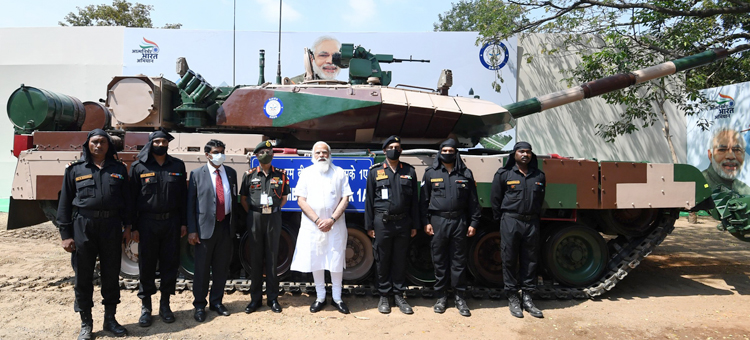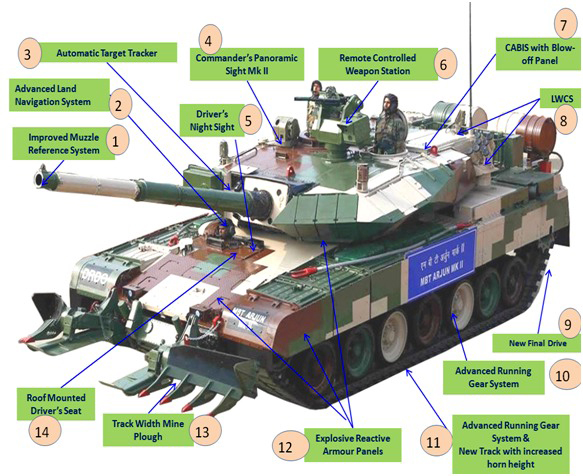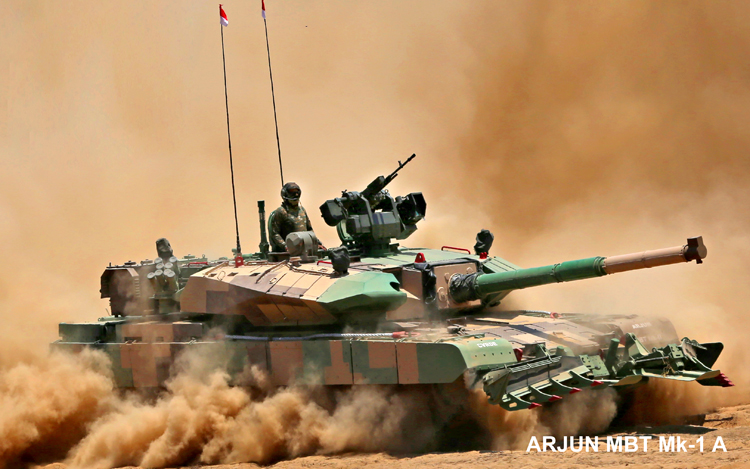INDIAN ARMED FORCES CHIEFS ON OUR RELENTLESS AND FOCUSED PUBLISHING EFFORTS

The insightful articles, inspiring narrations and analytical perspectives presented by the Editorial Team, establish an alluring connect with the reader. My compliments and best wishes to SP Guide Publications.

"Over the past 60 years, the growth of SP Guide Publications has mirrored the rising stature of Indian Navy. Its well-researched and informative magazines on Defence and Aerospace sector have served to shape an educated opinion of our military personnel, policy makers and the public alike. I wish SP's Publication team continued success, fair winds and following seas in all future endeavour!"

Since, its inception in 1964, SP Guide Publications has consistently demonstrated commitment to high-quality journalism in the aerospace and defence sectors, earning a well-deserved reputation as Asia's largest media house in this domain. I wish SP Guide Publications continued success in its pursuit of excellence.
- MoD initiates comprehensive review of Defence Acquisition Procedure 2020, pushes for defence reforms
- G7: The Swansong
- Kalinga Connect: South Asia to Polynesia
- Must Credit DRDO for Operation Sindoor, now what is next for defence R&D?
- The layered Air Defence systems that worked superbly, the key element of Operation Sindoor
- Operation Sindoor | Day 2 DGMOs Briefing
- Operation Sindoor: Resolute yet Restrained
More Arjun Main Battle Tanks
Infused with 72 new features and more indigenous content from the earlier variant, the Arjun Mk-1A is expected to provide effortless mobility in all terrains, besides precise target engagement during day and night
 |
The Author is Former Director General of Information Systems and A Special Forces Veteran, Indian Army |

On September 23, 2021, the Ministry of Defence (MoD) ordered the procurement of 118 x Arjun Mk-1AMain Battle Tanks for the Indian Army (IA). The MoD issued a statement saying, “The Ministry of Defence (MoD) placed the order with Heavy Vehicles Factory (HVF), Avadi, near Chennai, for supply of 118 Main Battle Tanks (MBTs) Arjun Mk-1A for the Indian Army.”
The order, worth 7,523 crore, will provide a further boost to the 'Make in India' initiative in defence sector and is a big step towards achieving 'Atmanirbhar Bharat', envisioned by Prime Minister Narendra Modi. The Prime Minister had handed over the MBT Arjun Mk-1A to Chief of Army Staff General M.M. Naravane in Chennai on February 14, 2021.
From 2013 to 2015, 75 per cent of the Arjun MBTs had to be grounded because of lack of spare parts
After the Bangladesh Liberation War of 1971, the Indian Army (IA) had issued a general staff qualitative requirement (GSQR) for a new battle tank in 1972. It called for 50-tonne MBT equipped with a 120mm rifled gun, computerised fire control system (FCS) and powered by a 1,400 hp diesel engine. The programme to develop an indigenous tank was authorised in 1974. Funds were released in 1976, and the Combat Research and Development Establishment (CVRDE) under the Defence Research and Development Organisation (DRDO) was tasked to develop the Arjun MBT.
The original plan to produce the prototype by 1980 was revised to 1987 but the prototype was finally delivered in 1989. The IA undertook a series of trials during the period from 1993 to 1996 and found major defects including engine overheating and suboptimal weapons system performance. By end 1996, 14 x pre-production series (PPS) tanks were delivered to the IA for trials. The trials identified 10 shortcomings that needed to be addressed.
IMPROVEMENTS IN ARJUN MK-1A TANK

In 1996, the development of PPS-15 tank prototype was initiated to address the shortcomings found by the IA. By 1999, the Cabinet Committee on Security (CCS) accorded clearance for limited production of the Arjun MBT based on the PPS-15 prototype. In 2000, the IA placed an order for the procurement of 124 x Arjun Mk1 tanks. Serial production of Arjun Mk1 began in 2003 at HVF, Avadi and first batch of 5 x Arjun Mk1 were delivered to the IA on August 7, 2004. By 2009, two armoured regiments had been equipped with Arjun Mk1 MBTs. By June 2011, more than 100 tanks had been delivered to the IA and delivery of all 124 tanks was completed by mid-2012. But from 2013 to 2015, 75 per cent of the Arjun MBTs had to be grounded because of lack of spare parts.
Earlier in 2010, the DRDO had proposed an improved variant of the Arjun designated as the Arjun MK2, first prototype of which was handed over to IA in 2011 for validation trials. More improvements followed and by 2018, two Arjun MK2 (re-designated Arjun Mk-1A) prototypes had completed user trials by the end of the year.
The addition of 118 Arjun Mk-1A MBTs will increase the number of tanks in the IA but it is simply the same wine in new bottle
As per DRDO sources, selection of Arjun Mk-1A MBT followed extensive trial evaluation that was conducted in various phases covering 7,000+ km (both in DRDO and user trials) of automotive and substantial firing of various ammunitions during the period 2012-2015. Infused with 72 new features and more indigenous content from the earlier variant, the Arjun Mk-1A is expected to provide effortless mobility in all terrains, besides precise target engagement during day and night.
A statement released by the MoD reads, "The Mk-1A is equipped with accurate and superior firepower, all-terrain mobility and an invincible multi-layered protection provided by an array of advanced technology systems. It can take on the enemy during day and night conditions and in both static and dynamic modes. This tank is particularly configured and designed for Indian conditions and hence it is suitable for deployment to protect the frontiers in an effective manner. This production order of 118 x Arjun Mk-1Ato HVF, Avadi opens up a large avenue in defence manufacturing for over 200 Indian vendors including Micro, Small and Medium Enterprises (MSMEs), with employment opportunities to around 8,000 people.”

The addition of 118 Arjun Mk-1A MBTs will increase the number of tanks in the IA but behind all the hype of DRDO and MoD it is simply the same wine in new bottle considering the following:
- Notwithstanding the above statements by the MoD and the DRDO, 124 x Arjun Mk1 comprising two regiments are already in service with the IA since mid-2012.
- In 1999, the CCS had accorded clearance for production of the Arjun MBT ‘based on the PPS-15 prototype’.
- Between 2013 and 2015, 75 per cent of the Arjun Mk1 MBTs had to be grounded because of lack of spare parts.
- The feedback even today is that the Arjun Mk1 MBT continues to be afflicted with reliability, maintenance and lack of support for R2 and above repairs, as requisite ecosystem is almost nonexistent. Also with Mk1 ammunition, there were serious issues with its capability to penetrate beyond 450mm of armour.
The question therefore is has the MoD pushed this deal through hastily to please Prime Minister Narendra Modi as a boost to his initiative of ‘Make in India’ and vision of ‘Atmanirbhar Bharat’ with elections in multiple states approaching? Are we not repeating the same mistake we did in similarly pushing through the Dhanush Gun in a hurry with faulty bearings? Both the Dhanush and ATAGs are behind their delivery schedules. Take the recent Airbus Defence and Space and Tata Advanced Systems Limited (TASL) deal wherein the consortium is to manufacture 40 of the 56 C295 in India within 10 years, immediately after which, Sukaran Singh, MD and CEO of TASL said, “We need some more time.” Why give ambitious production schedules that cannot be kept up?
The brutal fact is that the Arjun Mk1 can hardly match up to the T-90 tanks with the Indian Army for the past so many years
It is not a question of indigenous manufacture but the brutal fact is that the Arjun Mk1 can hardly match up to the T-90 tanks with the IA for the past so many years. On a different level same has been the case with the 5.56 INSAS rifles which after so many years is now going to be replaced by the AK-203 rifles. The ‘deep state’ would like to continue pumping thousands of crores of rupees into the DRDO – the goose that lays golden eggs for them but this needs to stop, the irony being that the military can hardly refuse what the administration wants to force down its throat. The same 7,523 crore could have been used to modernise the IA with artificial intelligence (AI) based manned or unmanned platforms, or to provision light tanks which the IA has been desperately looking for since the Chinese aggression in May-June 2020. To say that the 50-tonne Arjun Mk-1A can go anywhere fools no one.





